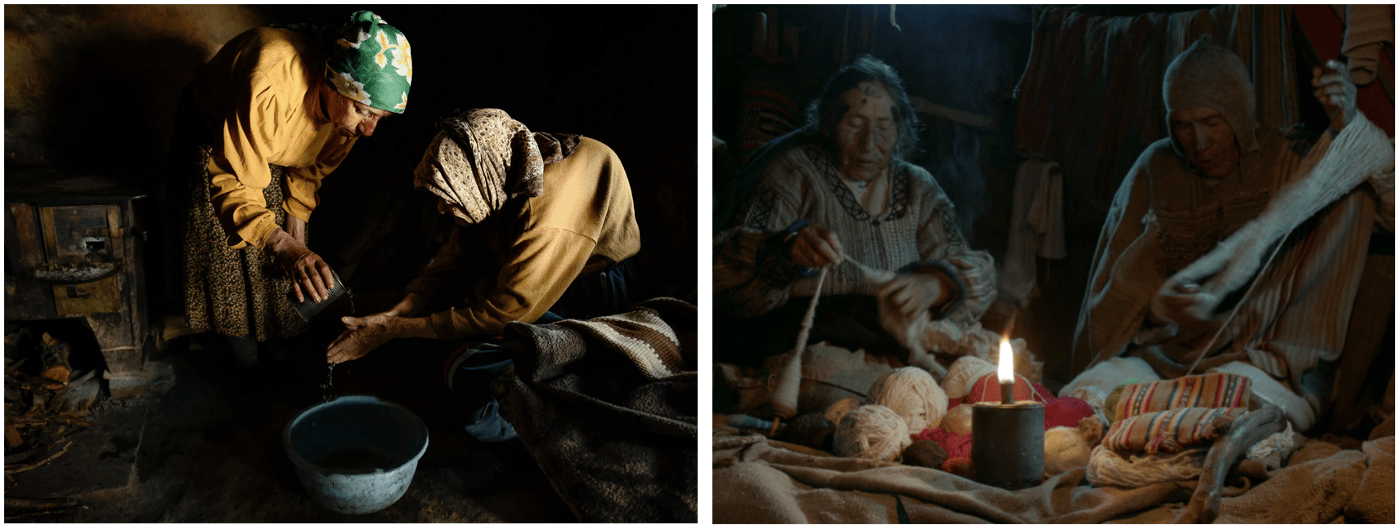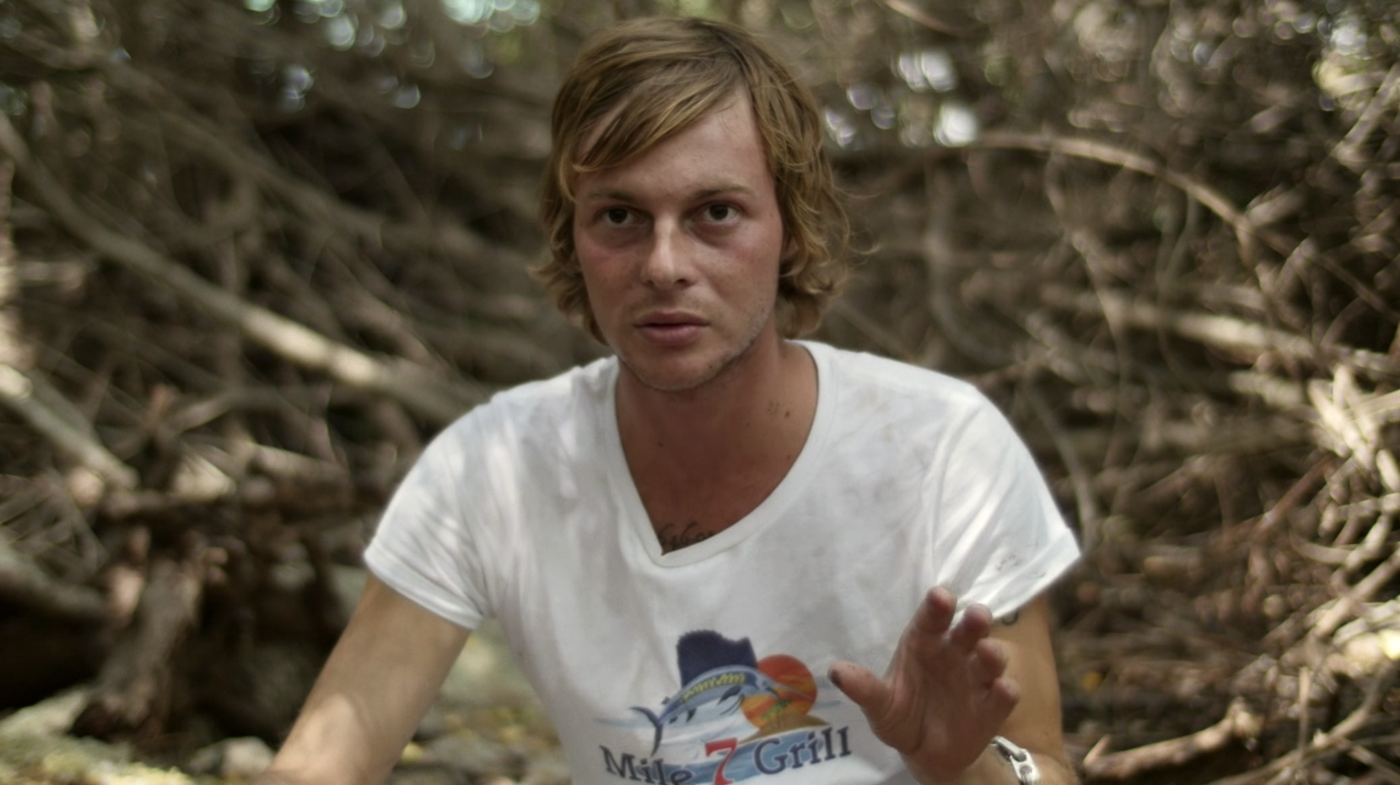
It is difficult to move after watching Óscar Catacora’s 2017 film Eternity. It takes a moment or two to find your way out of its pall. There is nothing like the simple drama of two humans trying to survive to completely grip you. Eternity takes place in one location and has only two people anything more would have just been decoration.
The film may have been simple in its ingredients but the curious nature of the film’s presentation has it hover between the personal and symbolic. There is an intense intimacy that we feel with the individual characters but there is also a more removed or abstracted symbolism that is clearly at play. This movie is about two specific individuals, Willka and Phaxsi but it also refers to something larger having to do with humanity’s place on Earth.
Willka and Phaxsi are a married couple who live high in the Andes Mountains. They are completely isolated with only a small stone and thatch house, a few sheep, one llama, and a dog for company. Willka and Phaxs are very old, most likely in their 90’s. They have a weathered, worn appearance. Years of exposure and hard labor have hardened them and given them a weathered, worn appearance. They look strong but after 90 years that hardness is turning into stiffness and exhaustion.
The first association I had while watching Eternity was another film that came out a year after Eternity called Honeyland. Honeyland was made by Tamara Kotevska and Ljubomir Stefanov in the mountains of Macedonia under similar conditions. There we see a slightly less isolated couple comprised of a mother, Nazife, and her daughter, Hatidže, both of whom are quite old. Honeyland is technically a documentary. The events are real, but it is presented in the manner of a feature film narrative. If you didn’t know it was a documentary, you wouldn’t be able to tell.

Both films are literally and metaphorically close to their subjects. Half of both films take place inside a tiny home that has been cobbled together by its inhabitants. All of the people are hunched and crooked as if they have been shaped by their abodes.
In addition, both films share the theme of a fading preindustrial world and the emergence of the modern world of consumerism. Honeyland addresses this more directly. Hatidže is a beekeeper and is challenged by a world that requires mass production. Back in the mountains of Peru Willka and Phaxsi barely have any contact with the industrial world, but their son has left them for the big city and is embarrassed by their “backward” ways.
The absence of their son weighs heavily on the couple, so heavily as to evoke Samuel Becket’s play Waiting For Godot. I am hesitant to make this comparison because Vladimir and Estragon in Waiting For Godot are clownish and there is nothing clownish about Willka and Phaxsi or the life they lead. However, Vladimir and Estragon are symbolic. They are a means of expressing ideas about existentialism. I’m not sure that Catacora intended an association with Waiting For Godot but the dialogue feels very similar sometimes.
Willka: “It looks like our son will never arrive
Phaxsi : “What have we done wrong, for him to abandon us?
Willka: “He left a long time ago and maybe he thinks we already died
Phaxsi: ”We still live and we are waiting for him. (long pause) Where will he be? He doesn’t show up.

Becket was spotlighting the absurdity of our existence with satire, Cartacora has no devilish smirk behind his camera, but there is a kind of absurdity to the situation Willka and Phaxsi are in. A kind of absurdity that can either point to their persistence in an extreme environment or to the strange situation that we find ourselves in, we the hairless apes, who wander around in a world that provides us with no explanations.
I’m not sure that Catacora would agree with any of what I am saying. When asked about the film he said that he intended to highlight the loss of the old traditions and languages of his ancestors, but it also seems that these ‘ways” are presented with at least some ambivalence. Willka and Phaxsi are tragic figures and could be seen as at least partly culpable in their fate. The desperate situation they find themselves in is of their own making. It can only be assumed that they chose to live the way do. It does not seem as though they are refugees or exiles. The modernizing of the world does not appear to have driven them into the mountains. They are choosing to hold onto a way of life that is harsh and challenging.
Catacora’s admiration for them is clear. The couple struggles valiantly against the elements. They are resourceful and creative. We are invited to appreciate their knowledge and skills, but in the end, they do not prevail. Although it could be argued that living into your 90’s in a harsh terrain without assistance constitutes prevailing.

Willka and Phaxsi are like a mythological duo in a heroic effort to survive. They are often small on the screen, standing amidst the immense and inhospitable landscape. They could be Vladimir and Estragon, or Adam and Eve after the expulsion. In the language they speak, called Aymara, Willka’s name means sun and Phaxsi means moon. The sun and moon are perhaps the two most mythologized objects in the world. Their nature, their relationship to each other, where they go when they disappear are mysteries every culture has interpreted and woven into narratives. Narratives that often form the basis of a religion or cultural identity.
Eternity depicts a unique and personal journey that easily reflects something larger and more universal. Simple premises lend themselves to complex interpretations. A simple film refrains from nailing down its meaning or presenting specific ramifications which leaves all this territory open for interpretation. It also leaves us room to project ourselves into the film. Even if many of us have little to nothing in common with Willka and Phaxsi, our shared anxiety about our place on this earth is enough to fully connect us to them.

If you enjoyed this article click here for more
www.filmofileshideout.com/archives/mohammad-rasoulofs-the-white-meadows



